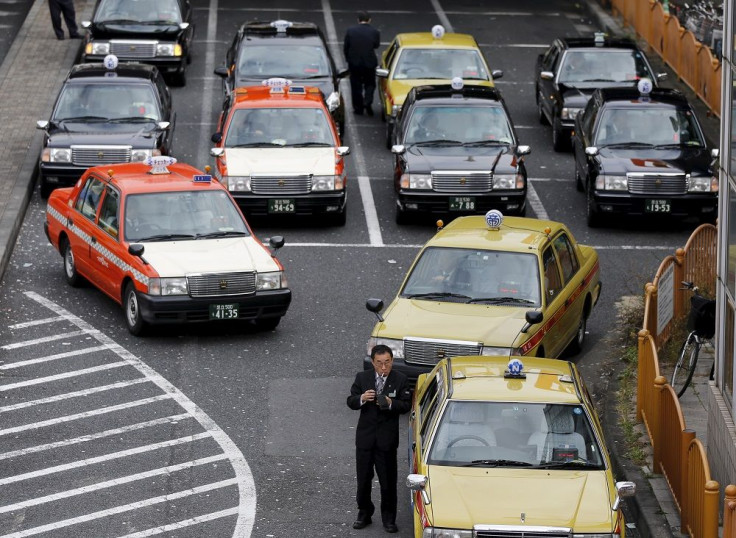Global Markets Overview - Feb. 15, 2016

China’s return and market pricing
With Lunar New Year having come to an end over the weekend, mainland China is the final market to return from the yearly festival.
Interestingly, looking at the China ADRs that have been active over the past week, China may be positively influenced by the rally on Friday and the fact Japan looks to have turned a corner.
The Zhou effect
A bigger case in point for China today was PBoC governor Zhou’s public comments from the weekend.
Finally braking his silence on the state of play in the RMB, he fairly decisively laid down the law.
Bottom line: The likelihood of a sharp one-off interventionist devaluation in the RMB is remote, bordering on never. He did leave the option to allow a gradual depreciation in the RMB but, in short, the fear around a Chinese intervention should dissipate.
Other points:
· Longer-term sustainability in the RMB still has some lingering questions as Zhou is suggesting China is still on a path to a ‘freely’ floating exchange rate. Yet the question of how the supply/demand of a free floating currency would work for China remains cloudy.
· Capital controls are unlikely to see any further tightening. This is a key point considering China’s plans and previous actions to liberalise its financial markets – a big positive.
· Zhou also highlighted the fact outflows have been at ‘normal levels’ and that reverses, while lower than normal, are more than able to cover repayments. Also a key positive.
This should be met with positive trade. Each time we have seen a concerted effort to either explain or positively interact with Chinese capital markets, Asia has stabilised and traded in a more orderly fashion.
The bigger question is: Will it last?
On Friday , Japan illustrated the issues facing the region’s two largest economies. Fund flows are moving in the wrong direction to what the central bank desires. Governor Kuroda’s comments that negative rates are having the ‘intended’ outcomes and that the BoJ’s current policy ‘has not lead to current market conditions’ is hard to swallow and was quickly illustrated in the NKY losing 5.4% mid-session.
The fact the Nikkei went into complete reverse after LDP official Yamamoto – a key architect of Abe’s Abemonics plans – suggested Japan needed to hold an emergency meeting and that the BoJ needs to work ‘in coordination with other central banks’ shows Japan is quickly becoming a bigger issue than China. An emergency meeting will be a positive, even if it’s for the wrong reasons and this remains a ‘watch this space’ moment.
So, with two of the bigger macro issues in Asia ‘soothed’ (although certainly not fixed and they remain without set plans), the next question is: How high will we bounce?
The Asian bounce trade
· The UAE energy minster story has seen WTI rocketing higher. NYMEX added 12% and Brent 11% on Friday night. Energy and material plays are in for a very positive trading session.
· The bounce in US markets on discrediting several ‘scorched earth’ scenarios were particularly positive for US banks. This will be a positive of Australian banks
· European banks also showed equity pricing versus actual underlying asset working is skewed so far to the pessimistic side that one would have to expect a snap back. A case in point is the data released from Commerzbank over the weekend. It is in a very strong capital and asset position, yet its pricing suggested it was under immense pressure.
· Australian banks are priced for a large downturn in underlying asset and capital positions. CBA has proved this assumption is probably wrong. Will NAB, WBC and ANZ suggest similar assumptions are wrong in their respective pricings this week at their quarterly updates?
ASX pricing is showing a 1.5% upside on the open this morning, the first positive Monday print for February.
Asian markets opening call
Price at 8:00am AEDT
Change from the Offical market close
Percentage Change
Australia 200 cash (ASX 200)
4,836.70
71
1.50%
Japan 225 (Nikkei)
15,454.70
503
3.36%
Hong Kong HS 50 cash (Hang Seng)
18,575.40
256
1.40%
China H-shares cash
7,611.90
107
1.42%
Singapore Blue Chip cash (MSCI Singapore)
288.51
3
0.96%
Futures Markets
Price at 8:00am AEDT
Change Since Australian Market Close
Percentage Change
Dow Jones Futures (March)
15,918.00
0.00
0.00%
S&P Futures (March)
1,859.88
0.00
0.00%
ASX SPI Futures (March)
4,785.00
96.00
1.86%
NKY 225 Futures (March)
15,427.50
0.00
0.00%
Key inputs for the upcoming Australian trading session (Change are from 16:00 AEDT )
Price at 8:00am AEDT
Change Since Australian Market Close
Percentage Change
AUD/USD
$0.7112
0.0000
0.00%
USD/JPY
¥113.405
-0.010
-0.01%
Rio Tinto Plc (London)
£18.45
1.40
8.21%
BHP Billiton Plc (London)
£6.72
0.38
5.98%
BHP Billiton Ltd. ADR (US) (AUD)
$15.97
0.88
5.85%
Commonwealth Bank ADR (US) (AUD)
$74.18
33.71
83.31%
Metals Exchanges
Price at 8:00am AEDT
Change Since Australian Market Close
Percentage Change
Gold (spot)
$1,238.05
0.00
0.00%
IG Iron Ore (CNH)
¥330.35
0.00
0.00%
IG provides round-the-clock CFD trading on currencies, indices and commodities. The levels quoted in this email are the latest tradeable price for each market. The net change for each market is referenced from the corresponding tradeable level at yesterday’s close of the ASX. These levels are specifically tailored for the Australian trader and take into account the 24hr nature of global markets.
Please contact IG if you require market commentary or the latest dealing price.
EVAN LUCAS
Market Strategist
IG, Level 15, 55 Collins Street, Melbourne VIC 3000
D: +61398601748 | T: +61398601711
www.ig.com
IG Markets
[Kick off your trading day with our newsletter]
More from IBT Markets:
Follow us on Facebook
Follow us on Twitter
Subscribe to get this delivered to your inbox daily




















